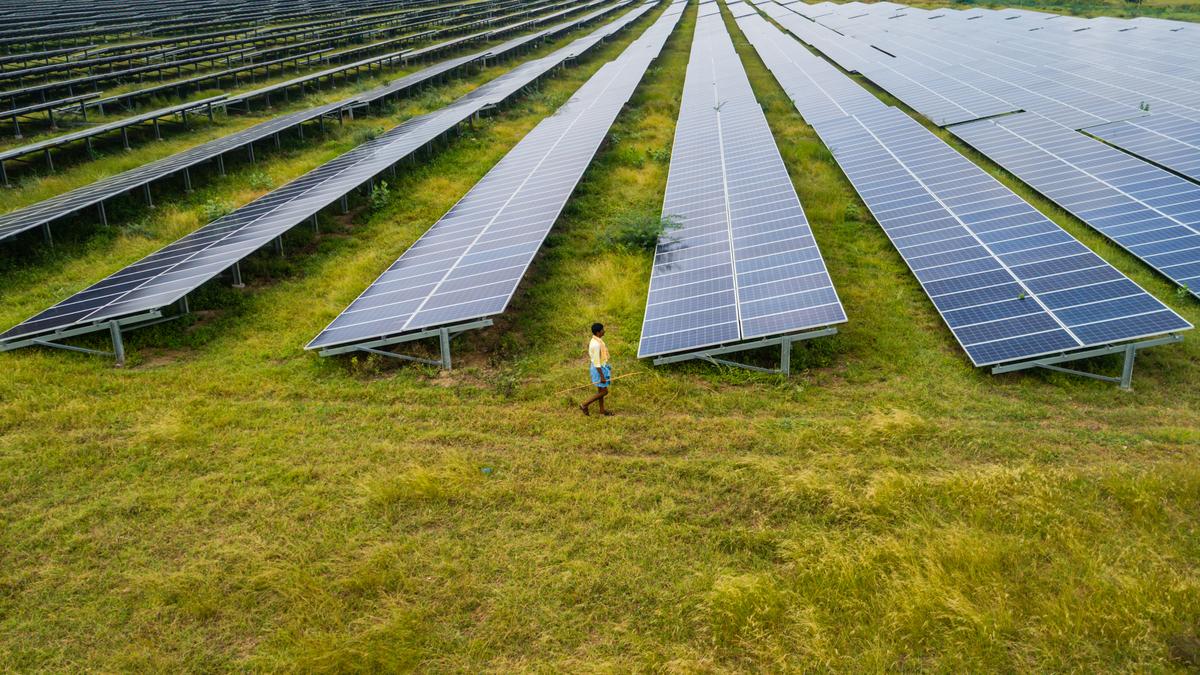
The other side of ‘green’ initiatives and the need for fair treatment of rural communities Premium
The Hindu
Places like Pavagada in Karnataka are at the centre of India’s solar dreams. Around the year 2016 the government started leasing lands from farmers in this region, who had started finding farming unviable given the unpredictability of rains. Today the second largest solar power park in India is located here. While it might have looked like a win-win situation for everyone, what about the long-term impact?
Places like Pavagada in Karnataka are at the centre of India’s solar dreams. Around the year 2016 the government started leasing lands from farmers in this region, who had started finding farming unviable given the unpredictability of rains. Today the second largest solar power park in India is located here. While it might have looked like a win-win situation for everyone, what about the long-term impact?
“Very similar to Pavagada, a solar power project has been set up in Challakere. These projects in the name of ‘green’ initiatives are not only taking away land from farmers but are pushing them to migrate elsewhere... years from now Challakere and many other such rural places that fall under these ‘green’ initiatives will be nothing but lands filled with industrial waste,” says researcher and educator Bhargavi Rao.
She was speaking at a panel discussion on “Impact of climate change on rural livelihood” held as part of Uttariya, a five-day series of events at Bangalore International Centre, Domlur, organised by Charaka Women’s Co-operative Society in collaboration with Desi Trust and Ragi Kana.
The seminars organised as part of the event saw experts criticising some of the “green” initiatives like solar projects leading to increased unemployment and deteriorating living conditions in rural areas, economic inequality, insufficient land for sustainable farming, the impact of infrastructural development on wildlife and human habitation, and the need for government support for organic farming and traditional textiles to combat exploitation in the textile industry.
Throwing light on several projects emerging under “green” initiatives, Rao cited a Centre for Monitoring Indian Economy (CMIE) report which showed that the unemployment rate of youth has increased by 7.5% in 2023 in these regions, in addition to the deterioration of health, food security and good living conditions. Land, which is a critical element of livelihood and employment in the rural areas, was being taken away, she said.
Panelists also threw light on the huge income inequality in the country. Noting that even two acres of land in rural areas are not enough to have a sustainable income for a family, anthropologist Dr. A.R. Vasavi said, “There is great economic inequality in our country. As many as 100 families own 40% of the GDP, with access to huge assets and natural resources.”
“For example, the average income of someone in a rural area is ₹240 per day, but businessman Gautam Adani’s income per day is about ₹200 crore. Even two acres of land in rural areas is not enough to have a sustainable income for a family. With fluctuating rainfall, increasing temperature, degradation of natural resources like soil, seed, water bodies and economic inequality, we see many people leaving the agriculture sector and huge agri-lands getting abandoned,” she said.











